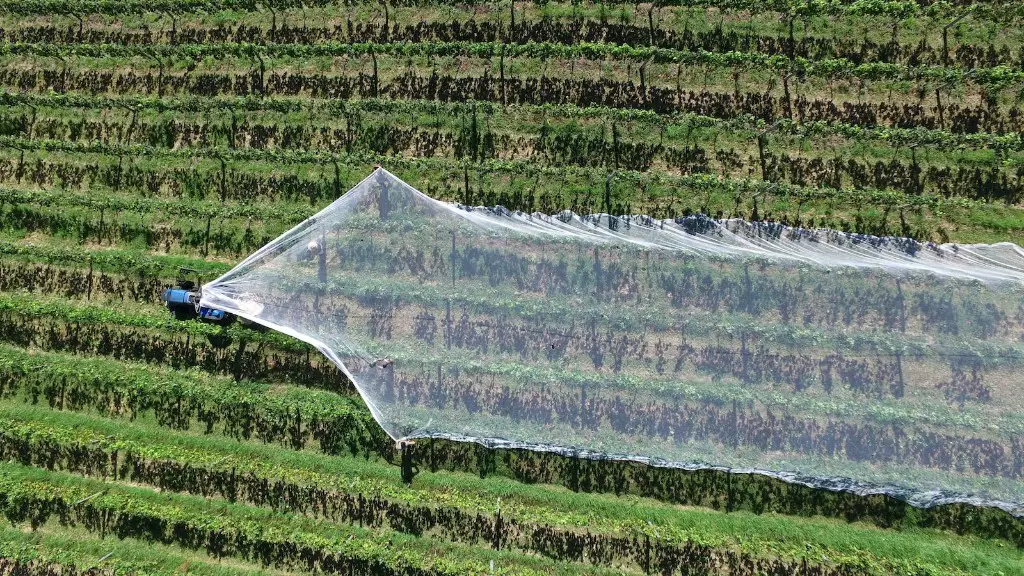Spraying in the agricultural industry is the application of one or more substances, such as fertilizers, herbicides, insecticides, and other chemical agents, to control weeds and pests. This process helps farmers produce healthy, high-quality crops while protecting the environment. Spraying can occur at various stages of crop production, including pre-plant and pre-harvest, when it is important to control certain insects, diseases, and weeds, as well as to protect the plants from stress induced by the environment. Although spraying has been used for many years, modern technology has improved it, enabling farmers to spray more efficiently and accurately, reducing the amount of material needed and increasing the effectiveness of the products. Moreover, some modern techniques, such as aerial spraying, have increased the safety of spray application.
Types of Spray Applications
There are several different types of spray applications used in agriculture. These include: broadcast spraying, for large areas; spot spraying, for isolated problems; injection spraying, for special plants or crops; and direct spraying, which can be either pressurized or non-pressurized. Broadcast spraying is a quick, cost-effective way to distribute materials over a large area, while spot spraying targets small areas, such as field boundaries or problem plants. Injection spraying, meanwhile, injects substances deep into the soil, allowing them to reach the root system, while direct spraying is the most precise and direct application of spray materials.
Advantages and Disadvantages of Spraying
Spraying has many advantages for farmers. It is the most efficient way of applying chemical agents and is less costly than other methods such as manual labor or tractor-mounted equipment. Furthermore, it ensures even distribution of materials, eliminates inconsistent application, and can reduce labor costs. However, spraying can also be detrimental, especially if not done properly. Poor spraying can lead to runoff, chemical drift, and other environmental problems, as well as discrepancies in the application of material.
Precautions to Take When Spraying
It is important to take certain precautions when spraying, to ensure the safety of personnel, the environment, and the crop. Farmers should choose the appropriate type of equipment, use effective personal protective equipment, and become familiar with the safety instructions of the products they are using. Furthermore, they should avoid spraying during unfavorable weather conditions such as wind or heavy rain and keep a record of all spraying activities, including the name and location of the target area, type of materials used, and other pertinent information.
Spraying Regulations
The regulatory framework for spraying in the agricultural sector can vary from country to country. In general, most governments require farmers to obtain permission before spraying, to ensure the safety of the public, as well as to monitor and control the use of chemical agents. They also typically require farmers to use equipment that is certified for agricultural usage and to keep records of all actions related to the spraying activities.
Potential Hazards of Spraying
Despite the benefits of spraying, there are some potential hazards associated with it. Inhalation of spray materials can lead to respiratory problems and pesticide poisoning, while eye and skin contact may cause irritation and burns. Moreover, if the material is not applied correctly, it can drift away and contaminate water sources, which can be potentially hazardous for humans and other living organisms. Finally, the misuse or improper disposal of materials can be toxic to the environment.
Sustainable Spraying Methods
In recent years, some farmers have sought to employ more sustainable spraying methods in order to reduce their environmental impact. These methods focus on using fewer chemical agents and working with natural materials, thereby reducing the risk of harmful residues and runoff. Integrated pest management (IPM) is one such approach, which combines biological and cultural controls to reduce the need for chemical treatments. Other strategies include using organic materials, trusting the natural predator-prey relationship to check pest populations, and making use of natural sources to increase soil fertility. By adopting such measures, farmers can minimize the use of chemical agents, thus reducing the risk of pollution.
Spraying Technologies
Modern technology has enabled farmers to spray more efficiently and accurately than ever before. GPS-guided tractors with sprayers are now commonplace, allowing for precision spray application that takes into account factors such as topography, soil type, and wind direction. This technology reduces the chance of mishaps and ensures the even distribution of materials. Moreover, some robots can also be employed for spraying, doing away with the need for human labor and providing precise, precise application. In addition, aerial drones are increasingly being used in agricultural spraying.
Role of Technology in Spraying
The use of technology in spraying has increased drastically in the past few decades. Technologies such as GPS mapping and robotic applications result in more precise and faster application, reducing the amount of materials used and the risk of contamination. Moreover, these technologies enable farmers to keep records of all their spraying activities, thus enabling them to monitor their use of chemical agents. Furthermore, new spray application devices, such as electrostatic sprayers, can be used to reduce the amount of material used and maximize the efficacy of the product.
Advancement in Spraying Technology
In recent years, there have been numerous advancements in the spraying technology used in the agricultural sector. Technologies such as precision spraying, autonomous tractors, and aerial drones have enabled farmers to spray more accurately, efficiently, and cost-effectively. Moreover, advancements in sensor technology have enabled farmers to track the progress of their spraying activities and optimize their use of chemical agents. Finally, the integration of computing and artificial intelligence technology into agricultural processes has enabled farmers to monitor their spraying operations more closely and develop more accurate and effective spraying strategies.


